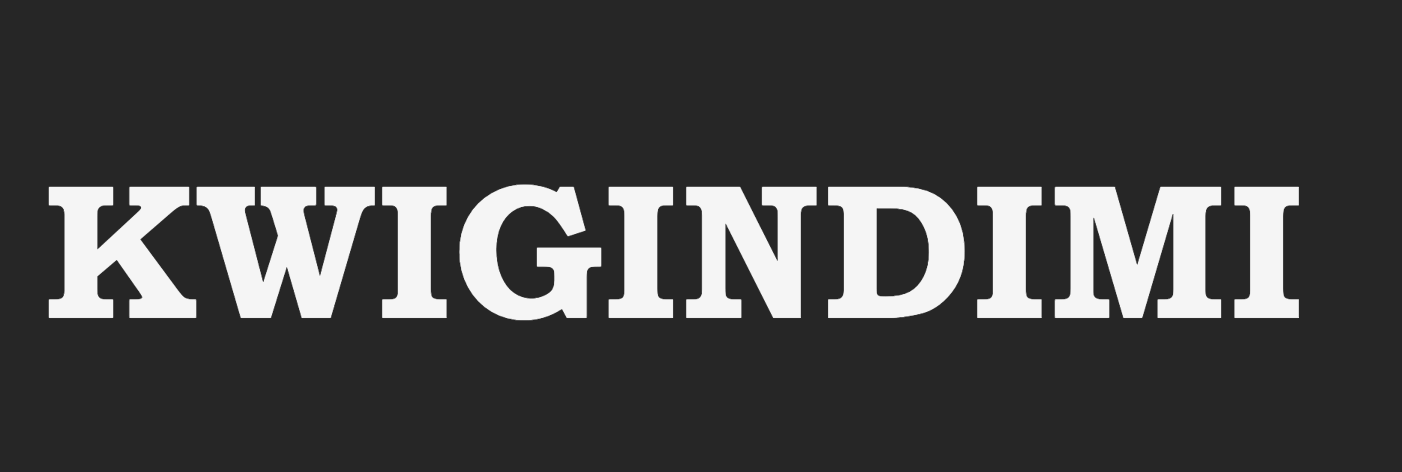Introduction: The Rise of Online Graphic Design Education
In recent years, the landscape of graphic design education has undergone a profound transformation. No longer confined to brick-and-mortar institutions, aspiring designers now have access to a wealth of online courses that promise flexibility, affordability, and cutting-edge instruction. As the demand for visually compelling content continues to surge across industries from marketing agencies to tech startups to independent freelancers online graphic design programs have emerged as a popular pathway for both beginners and seasoned professionals seeking to hone their skills.
The convenience of accessing lectures, assignments, and critiques from anywhere in the world has democratized design education, empowering individuals to launch or advance their creative careers on their own schedules.
However, with this proliferation of options comes a critical challenge: how does one discern a high-quality program from a course that merely offers flashy marketing? Accreditation plays a pivotal role in establishing credibility, ensuring that the curriculum meets rigorous academic and industry standards.
Beyond accreditation, the structure of the curriculum, the expertise of the faculty, the technology platforms employed, and the support services available all contribute to the overall learning experience and long-term career outcomes. In this comprehensive guide, we will navigate the digital canvas together, exploring the essential criteria that prospective students should evaluate when selecting an online accredited graphic design course.
Accreditation Matters: Why It’s Non-Negotiable
When investing time and resources into professional development, accreditation provides an indispensable assurance of quality. Accredited graphic design courses have undergone formal evaluation by recognized agencies, confirming that the institution adheres to standardized benchmarks in curriculum design, faculty qualifications, student support, and outcome assessment.
Without accreditation, there is a risk that a program may fall short in delivering comprehensive instruction or that credits earned will not transfer to other educational institutions or professional licensing bodies.
Understanding Accreditation Bodies
Not all accrediting bodies are created equal. Internationally recognized agencies such as the Accrediting Commission of Career Schools and Colleges (ACCSC) in the United States, or regional authorities like the Quality Assurance Agency for Higher Education (QAA) in the United Kingdom conduct periodic reviews to verify institutional integrity and educational effectiveness.
These reviews encompass an examination of faculty credentials, student retention and graduation rates, and the viability of program offerings. Prospective students should research which agencies oversee the accreditation status of their chosen course and verify that these agencies are recognized by governmental or professional entities in their region.
Regional vs. National Accreditation
In some countries, accreditation occurs at both the regional and national levels. Regional accreditation often covers a broad range of educational institutions within a defined geographic area and may be seen as more prestigious, particularly in the United States context. National accreditation, on the other hand, may focus on specialized or vocational training programs and can offer more flexibility in terms of innovation in curriculum.
Understanding this distinction is important because credits from regionally accredited programs generally have higher transferability and may be more readily accepted by employers, industry associations, and certification bodies.
Curriculum and Course Structure
The heart of any graphic design program lies in its curriculum. A well-designed course should offer a balanced mix of foundational theory, practical application, and opportunities for creative experimentation. Whether the program is delivered in semester-based modules or through a self-paced structure, the curriculum must address both the timeless principles of design and the latest industry tools and trends.
Core Design Principles
At the core of every reputable graphic design course are the fundamental principles that underpin effective visual communication. Topics such as color theory, typography, composition, and form are indispensable, providing the conceptual vocabulary through which designers can translate ideas into compelling visuals. Courses should include in-depth explorations of these principles, supported by analytic assignments that encourage students to deconstruct existing designs and articulate the rationale behind their visual impact.
Software Proficiency and Tools Training
While theory is vital, graphic design is also a highly technical field. Mastery of industry-standard software such as Adobe Photoshop, Illustrator, InDesign, and increasingly, tools like Sketch and Figma is essential. An accredited online course must provide comprehensive tutorials, hands-on projects, and timely software updates to ensure that students develop fluency in these platforms. Ideally, the program will offer cloud-based access or licenses included in tuition, so students can practice without incurring additional costs.
Specialized Electives and Emerging Trends
Beyond the foundational modules, top-tier programs offer electives that reflect the evolving nature of the industry. Students may choose to explore areas like UI/UX design, motion graphics, 3D modeling, or branding. Elective courses on emerging trends such as augmented reality design, responsive web graphics, or sustainable design practices equip learners with the adaptability required to remain competitive. When evaluating a program, inspect the breadth of electives and whether the institution updates its offerings regularly to reflect technological advancements and market demands.
Faculty Expertise and Industry Experience
The quality of instruction is largely determined by the instructors themselves. Faculty members who bring real-world experience and recognized achievements enhance the learning environment by offering practical insights, mentorship, and professional networking opportunities.
Credentials and Portfolio Review
Prospective students should examine faculty profiles, looking for instructors with advanced degrees in design disciplines, published work, or notable industry experience. Many programs feature portfolio reviews or critiques, in which faculty members provide personalized feedback on student projects. This mentorship model is invaluable; constructive critiques from seasoned professionals accelerate skill development and foster critical thinking.
Industry Partnerships and Guest Lecturers
Programs that cultivate partnerships with design agencies, technology companies, or prominent freelancers enrich the curriculum with guest lectures, live workshops, and collaborative projects. These industry connections can expose students to current industry workflows and emerging tools, while also facilitating internship and employment opportunities. When evaluating a program’s faculty, investigate whether the course regularly hosts guest speakers from leading organizations or integrates live case studies from corporate partners.
Learning Modes and Flexibility
One of the most compelling advantages of online education is its flexibility. However, flexibility should not compromise the quality of interaction, feedback, and community engagement that are vital to a designer’s growth.
Asynchronous vs. Synchronous Learning
Many online programs offer a hybrid model combining asynchronous content pre-recorded lectures, reading materials, and exercises that students complete at their own pace with synchronous sessions such as live webinars, critiques, and group discussions. Asynchronous modules accommodate different time zones and schedules, while synchronous interactions foster immediate feedback and peer collaboration. Determine whether the balance of these modes aligns with your learning style and availability.
Project-Based Learning and Peer Collaboration
Graphic design education thrives on hands-on practice. Accredited courses often adopt a project-based learning (PBL) approach, assigning real-world design briefs that simulate client scenarios. Peer collaboration tools virtual studios, discussion forums, and group critique sessions encourage students to share ideas, offer feedback, and build a sense of community. Before enrolling, review sample project briefs and inquire about the platforms used for collaboration and critique to ensure they meet your preferences for interactivity and feedback.
Technology and Platform Usability
An intuitive, reliable learning platform is foundational to an effective online education experience. From the user interface to the technical support available, technology can either enhance or hinder your journey through the program.
Learning Management Systems
Leading institutions employ robust Learning Management Systems (LMS) such as Canvas, Blackboard, or a bespoke platform designed for creative coursework. A good LMS should provide streamlined navigation between lectures, assignments, discussion boards, and gradebooks. It must also support multimedia content high-resolution images, video demos, interactive quizzes and integrate seamlessly with external design software for project submissions.
Software Access and Upgrades
Courses should clearly outline how students will access required software. Some programs include educational licenses for the duration of the course, while others may require students to procure their own subscriptions. Additionally, verify whether the institution provides timely updates to software versions and technical support to troubleshoot installation issues or performance challenges.
Portfolio Development and Capstone Projects
A strong portfolio is the currency of the graphic design industry. Accredited courses recognize this reality by embedding portfolio development into the curriculum and culminating in a capstone project that showcases a student’s best work.
Building a Solid Portfolio
Throughout the program, assignments should be crafted to build a cohesive body of work. From branding mockups and editorial layouts to digital illustrations and interactive prototypes, each project contributes to a diversified portfolio. Instructors should guide students on selecting and refining pieces, emphasizing presentation quality and narrative coherence. Some programs offer sessions dedicated to portfolio curation, where students learn to organize and present their work online or in physical formats for interviews and client pitches.
Showcase Opportunities and Exhibitions
Beyond individual review, top-tier courses facilitate portfolio showcases virtual exhibitions or end-of-year galleries where students can present their work to peers, faculty, and industry professionals. These events not only simulate real-world showings but also expand networking avenues and potential employment leads. Investigate whether prospective programs host these exhibitions and how they support graduates in leveraging them for career advancement.
Career Services and Networking
The ultimate goal of any professional education is to transition successfully into the workforce. A comprehensive support ecosystem can make this transition smoother and more fruitful.
Job Placement Assistance
Accredited programs often include dedicated career services that assist with résumé building, interview preparation, and job search strategies tailored to the creative sector. Some institutions maintain relationships with agencies and companies actively seeking junior designers, offering direct pipelines to internships and entry-level positions. Inquire about job placement rates and the extent of one-on-one career counseling available to students.
Alumni Networks and Community Engagement
An engaged alumni community can be a powerful resource for mentorship, referrals, and collaborative opportunities. Programs that foster active alumni networks through online forums, regional meetups, or virtual events provide a lifelong support system. Networking within these circles can reveal hidden job markets and collaborative projects that are not advertised publicly. Prospective students should ask about the size and vibrancy of the alumni network when evaluating programs.
Cost, Financial Aid, and Return on Investment
While online courses often offer cost savings compared to traditional on-campus programs, tuition fees can still represent a significant investment. Understanding the financial aspects is crucial for making an informed decision.
Tuition and Fee Transparency
Accredited institutions should clearly disclose all costs, including tuition, software fees, and any additional expenses for materials or exhibitions. Beware of programs that advertise a low base price but layer on hidden fees at later stages. A cost breakdown presented upfront helps prospective students plan their budgets effectively.
Scholarships and Payment Plans
Many accredited programs offer scholarships based on merit or financial need, as well as flexible payment plans that allow tuition to be paid in installments. Explore the availability of such financial aid and whether the application process is straightforward. Some courses even partner with external organizations to provide grants or subsidized rates to underrepresented groups, enhancing accessibility to design education.
Measuring ROI in Creative Careers
Return on investment in a creative field like graphic design may not always be immediately quantifiable in salary terms. Consider the potential for freelancing income, the value of a robust portfolio in securing higher-paying contracts, and the long-term career trajectory enabled by specialized skills. Accredited programs that include business-oriented modules covering topics such as client acquisition, pricing strategies, and contract negotiations can amplify ROI by preparing graduates for entrepreneurial success.
Student Support and Resources
Navigating a rigorous online program requires both academic and personal support systems. Quality institutions recognize this and provide comprehensive resources.
Technical Support and Tutoring
Reliable technical support ensures that software glitches and platform issues do not derail learning progress. Accredited programs typically offer dedicated help desks, tutorial videos, and live chat support. Additionally, tutoring services either peer-led or instructor-led can reinforce understanding of challenging concepts and techniques.
Mental Health and Time Management
Online study can feel isolating, and balancing coursework with personal commitments can be stressful. Forward-thinking programs integrate resources for mental health such as counseling services, stress-management workshops, and time-management seminars to foster student well-being. These supports contribute to higher completion rates and a more positive learning experience.
Real-World Case Studies and Testimonials
Hearing from alumni who have successfully navigated online graphic design courses provides valuable insight into the tangible benefits and potential challenges of each program.
Success Stories of Graduates
Look for detailed case studies that trace a student’s journey from enrollment through to career placement or freelance success. These profiles should highlight the specific ways in which the program’s curriculum, mentorship, and networking opportunities contributed to their achievements. Success stories that include quantifiable metrics such as income increases, project commissions, or award recognitions offer compelling evidence of a program’s impact.
Lessons Learned from Course Feedback
Balanced testimonials also include constructive feedback on areas for improvement. Testimonials that mention course pacing, workload distribution, or platform usability can guide prospective students in setting realistic expectations. Programs that actively solicit and publish this feedback demonstrate a commitment to continuous refinement and student-centered design.
Making the Right Choice: A Step-by-Step Guide
Choosing the right online accredited graphic design course involves systematic research and self-reflection. By following a structured approach, you can align your educational investment with your personal goals and career aspirations.
Self-Assessment and Goal Setting
Begin by defining your objectives: Are you seeking a comprehensive degree, a short-term certificate, or skill-specific mastery? Consider your current skill level, desired areas of specialization, and long-term career aspirations. Establishing clear goals will streamline the comparison process and help you prioritize program attributes that matter most to you.
Course Comparison Checklist
Create a checklist that evaluates each program against key criteria: accreditation status, curriculum breadth, faculty expertise, platform usability, portfolio support, career services, cost transparency, and student resources. Assign weights to each criterion based on your priorities whether that be depth of software training, networking opportunities, or tuition budget. This quantitative approach mitigates decision paralysis and focuses your efforts on programs that best meet your needs.
Conclusion: Empowering Your Creative Journey
The digital canvas offers boundless opportunities for creative expression and professional growth. As online accredited graphic design courses continue to evolve, they deliver a blend of theoretical rigor, practical skill-building, and real-world application ultimately shaping the next generation of visual storytellers. By carefully evaluating accreditation, curriculum design, faculty expertise, and support services, you can select a program that not only refines your technical abilities but also equips you with the strategic insights necessary to thrive in a competitive marketplace.
Embark on this transformative journey with confidence, knowing that a thoughtful choice today lays the foundation for a vibrant and rewarding career in graphic design. Whether you aspire to craft compelling brand identities, design immersive digital experiences, or pioneer innovative visual trends, the right online accredited course will serve as your springboard toward creative excellence.




